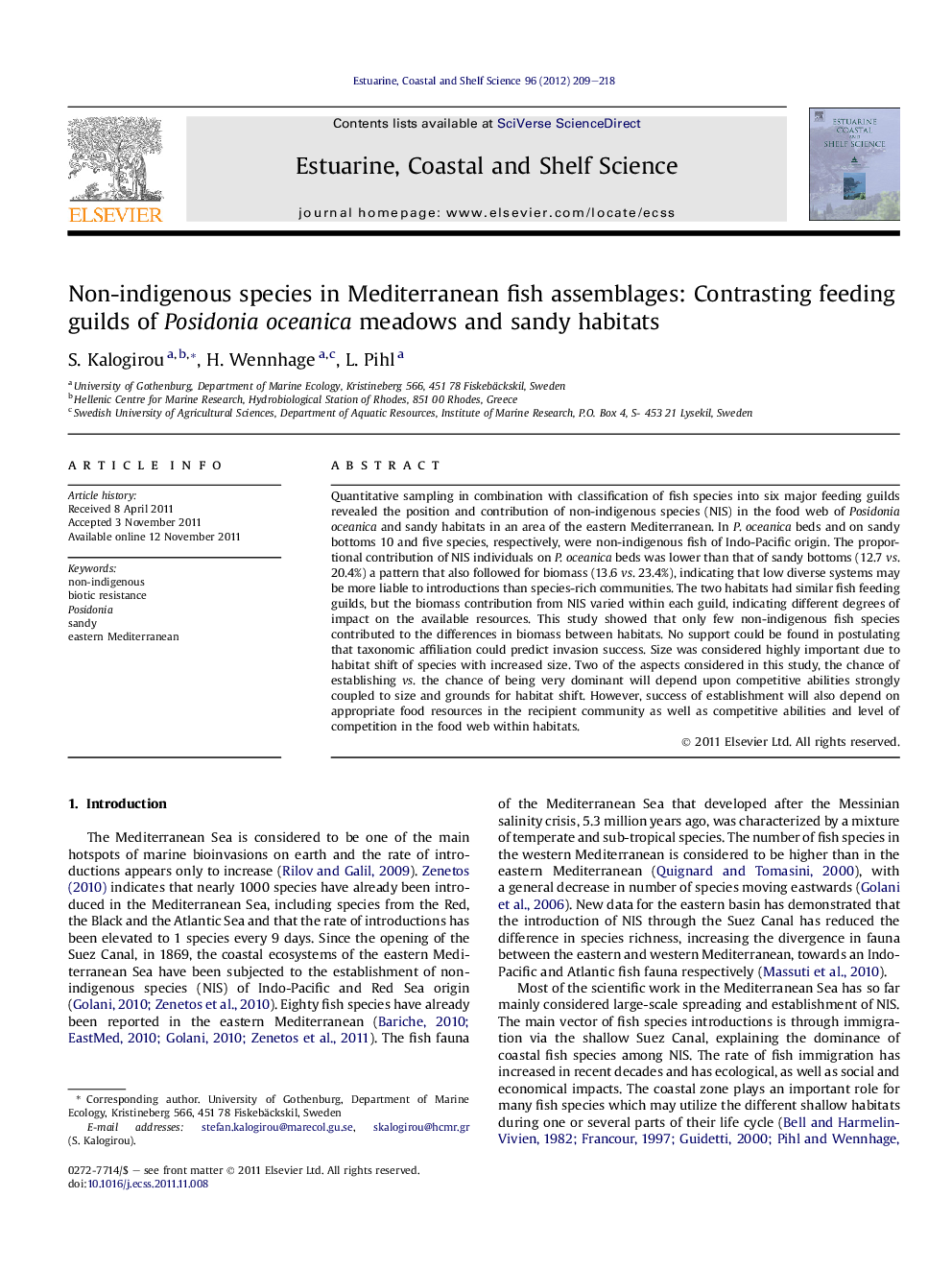| Article ID | Journal | Published Year | Pages | File Type |
|---|---|---|---|---|
| 4540311 | Estuarine, Coastal and Shelf Science | 2012 | 10 Pages |
Abstract
Quantitative sampling in combination with classification of fish species into six major feeding guilds revealed the position and contribution of non-indigenous species (NIS) in the food web of Posidonia oceanica and sandy habitats in an area of the eastern Mediterranean. In P. oceanica beds and on sandy bottoms 10 and five species, respectively, were non-indigenous fish of Indo-Pacific origin. The proportional contribution of NIS individuals on P. oceanica beds was lower than that of sandy bottoms (12.7 vs. 20.4%) a pattern that also followed for biomass (13.6 vs. 23.4%), indicating that low diverse systems may be more liable to introductions than species-rich communities. The two habitats had similar fish feeding guilds, but the biomass contribution from NIS varied within each guild, indicating different degrees of impact on the available resources. This study showed that only few non-indigenous fish species contributed to the differences in biomass between habitats. No support could be found in postulating that taxonomic affiliation could predict invasion success. Size was considered highly important due to habitat shift of species with increased size. Two of the aspects considered in this study, the chance of establishing vs. the chance of being very dominant will depend upon competitive abilities strongly coupled to size and grounds for habitat shift. However, success of establishment will also depend on appropriate food resources in the recipient community as well as competitive abilities and level of competition in the food web within habitats.
Related Topics
Physical Sciences and Engineering
Earth and Planetary Sciences
Geology
Authors
S. Kalogirou, H. Wennhage, L. Pihl,
